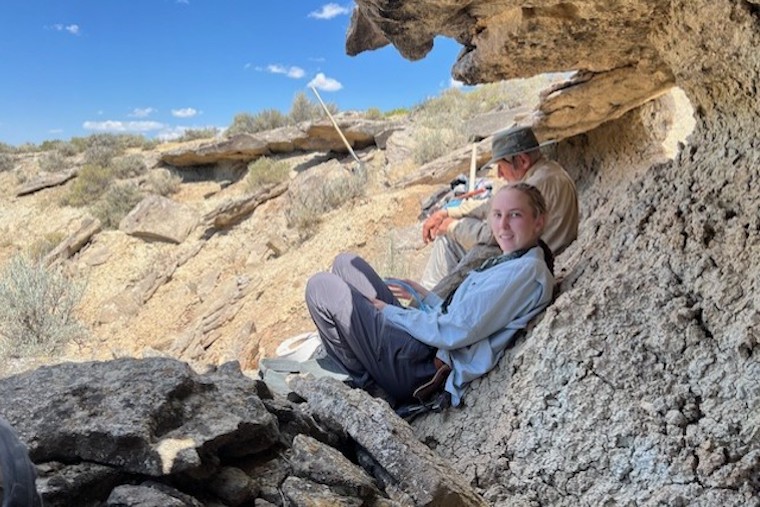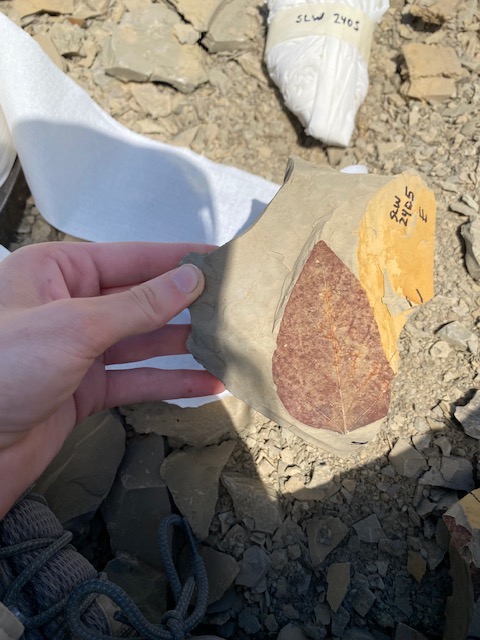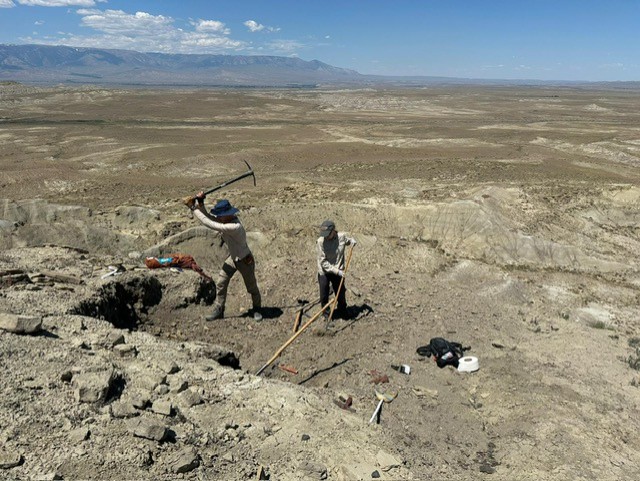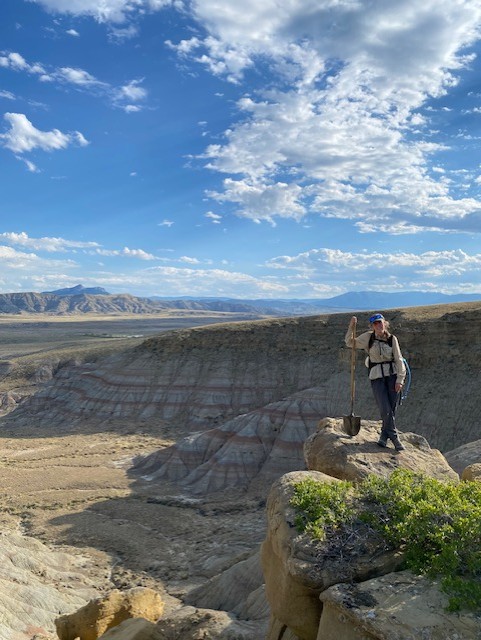Uncovering Clues to Climate Change in Ancient Forests
Student’s summer research project takes her to the ancient hills of Wyoming.

Can plants of the past provide clues as to what Earth may look like in a not-too-distant future? To find out, Rachel Morgen ‘26, under the mentorship of Joseph Milligan, assistant professor of environmental studies, has spent her summer using plant fossils to reconstruct the canopy cover of our planet millions of years ago. Through the hands-on research they hope to offer crucial insights into how our planet might respond to future climate change.
"Canopy cover is like the skin of the Earth," explained Milligan. "It influences everything from rainfall patterns to biodiversity. By studying ancient forests, we can understand how these ecosystems responded to past climate shifts and potentially predict future changes."
 Morgen and Milligan's research focuses on the Paleocene-Eocene Thermal Maximum (PETM),
a period of rapid global warming that occurred about 56 million years ago. By examining
the size and shape of leaf cells preserved in fossil plants of that period, they are
able to piece together a picture of the forest canopy during this critical time. Their
findings suggest that the Earth's canopy cover during the PETM was significantly lower
than it is today, indicating a more sensitive climate system. The discovery could
have profound implications for understanding how the planet might react to rising
temperatures in the future.
Morgen and Milligan's research focuses on the Paleocene-Eocene Thermal Maximum (PETM),
a period of rapid global warming that occurred about 56 million years ago. By examining
the size and shape of leaf cells preserved in fossil plants of that period, they are
able to piece together a picture of the forest canopy during this critical time. Their
findings suggest that the Earth's canopy cover during the PETM was significantly lower
than it is today, indicating a more sensitive climate system. The discovery could
have profound implications for understanding how the planet might react to rising
temperatures in the future.
Morgen, whose interest for the project stems from her combined passions for environmental history, climate change and earth science, likened the process to being a detective.
“We're using these tiny clues from the past to solve a much bigger puzzle about our planet's future,” Morgen said excitedly.
Part of the Toll Summer Research Program, Morgen and Milligan's collaboration is an example of the kind of groundbreaking research that can emerge from undergraduate studies. Their work is not only shedding light on the Earth's distant past but also providing crucial insights into our planet's uncertain future.

The research took Morgen to Bighorn Bend, a floodplain in northwest Wyoming near the Montana border which is rife with river deposited sediment. There she camped alongside other researchers and examined the fossils in the area, which offers “one of the best preserved and most detailed terrestrial record of the PETM,” according to Morgen.
“I've loved every part of this experience, but especially having the opportunity to talk to and learn from so many experts in the field,” said the Bend, Oregon native. “I also loved camping in Wyoming and getting to see how our samples were collected firsthand.”
"Rachel's work is a testament to the power of undergraduate research," said Milligan.
"Her ability to dive into complex scientific questions and produce meaningful results
is truly inspiring."
An environmental science and physics major with a minor in earth and planetary science, Morgen plans to continue exploring this field after studying abroad in Scotland in the fall.
"I hope to present my findings at a conference in the spring and eventually publish my research," she said. "Ultimately, I want to use my knowledge to help mitigate the impacts of climate change."
As for Milligan, he's excited about the potential of this research. "We're just scratching the surface," he said. "With additional support, we can expand this project to study other time periods and refine our understanding of how climate change affects terrestrial ecosystems."
To find out more about this and other great work going on at the Department of Environmental Sciences and Studies visit their webpage.
- Dominique Ellis Falcon